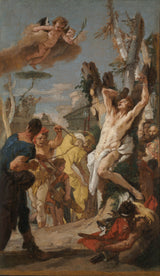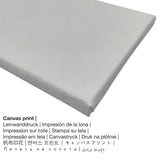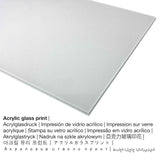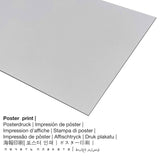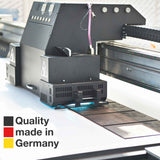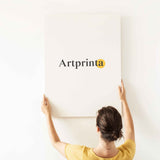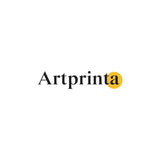Giovanni Battista Tiepolo, 1739 - Ọmụmụ maka Martyrdom nke Saint Sebastian (maka ebe obibi ndị mọnk Augustini na Diessen, Germany) - mbipụta nka mara mma.
Ụtụ gụnyere. Mbupu gbakọrọ na ndenye ọpụpụ.
Ihe ị kwesịrị ịma nke a karịa eserese 280 afọ
a nka ochie ihe omimi Study forThe Martyrdom of Saint Sebastian(for the Augustinian monastery at Diessen, Germany) e sere ya rococo onye na-ese ihe Giovanni Battista Tiepolo. Ụdị ihe osise ahụ tụrụ nha nha Nhazi: 67,5 x 45,5 x 6 cm (26 9/16 x 17 15/16 x 2 3/8 na); Edebereghị: 51,7 x 31,7 cm (20 3/8 x 12 1/2 na) and was painted with the medium oil on canvas. Today, this piece of art is part of the The Cleveland Museum of Art's digital art collection in Cleveland, Ohio, United States of America. The ngalaba ọha a na-enye ọrụ nka site n'ikike nke Velọ ihe ngosi nka nke Cleveland. : Ego Delia E. Holden na LE Holden. Na mgbakwunye na nke a, nhazi ahụ dị na Eserese format and has a side ratio of 9 : 16, which implies that the length is 45% shorter than the width. The painter, printmaker Giovanni Battista Tiepolo was a European artist, whose art style was mainly Rococo. The artist was born in 1696 in Venice, Venezia province, Veneto, Italy and died at the age of 74 in the year 1770 in Madrid, Madrid province, Comunidad de Madrid, Spain.
Ngwa ngwaahịa ndị ahịa anyị nwere ike iburu
Maka akwụkwọ nka ọ bụla dị mma anyị na-enye ihe dị iche iche na nha. Nhọrọ ndị a dị maka n'otu n'otu:
- Mbipụta akwụkwọ mmado (ihe kwaaji): A poster print is a printed canvas paper with a fine texture on the surface, that resembles the original version of the masterpiece. Please keep in mind, that depending on the absolute size of the poster we add a white margin between 2-6cm around the work of art, which facilitates the framing with your custom frame.
- Mbipụta iko acrylic na-egbuke egbuke (nke nwere ezigbo mkpuchi iko): The acrylic glass print, which is sometimes named as a print on plexiglass, will convert an artwork into gorgeous décor and forms a great alternative to canvas or aluminium dibond prints. The artwork is manufactured with modern UV printing technology. With an acrylic glass art print contrasts and granular image details will be visible because of the granular tonal gradation. The plexiglass with real glass coating protects your selected fine art print against light and external influences for decades.
- Mbipụta nke aluminom: Aluminium Dibond prints are metal prints with an impressive depth. The non-reflective surface creates a contemporary look. The Aluminium Dibond Print is the ideal start to prints on aluminum. For our Print On Aluminum Dibond, we print the selected artpiece on the surface of the white-primed aluminum material. The bright and white parts of the artpiece shine with a silk gloss but without any glow.
- Mbipụta kanvas: The canvas direct print is a printed cotton canvas stretched on a wood stretcher. It makes the typical look of three-dimensionality. How do I hang a canvas on my wall? Canvas prints are relatively low in weight. This means, it is easy and straightforward to hang up the Canvas print without any wall-mounts. Canvas prints are suited for any kind of wall.
Ederede iwu dị mkpa: We try whatever we can in order to depict our products as exact as possible and to demonstrate them visually in our shop. Nonetheless, the colors of the print materials, as well as the imprint might diverge slightly from the presentation on your screen. Depending on your screen settings and the quality of the surface, not all color pigments will be printed as exactly as the digital version. Bearing in mind that all the art prints are processed and printed by hand, there may as well be minor variations in the motif's size and exact position.
Ozi ndabere ihe
| Nkewa edemede: | mmepụta nka |
| Mmeputakwa: | mmeputakwa n'ụdị dijitalụ |
| Usoro mmepụta: | Mbipụta UV ozugbo (mbipụta dijitalụ) |
| Mmalite ngwaahịa: | emepụtara na Germany |
| Stockdị ngwaahịa: | na mmepụta ihe |
| Ihe eji eme atụmatụ: | ihe ndozi ụlọ, ime ụlọ |
| Nhazi nka nka: | nhazi ihe osise |
| Oke akụkụ: | 9: 16 |
| Mmetụta akụkụ onyonyo: | ogologo bụ 45% mkpụmkpụ karịa obosara |
| Nhọrọ akwa: | akwụkwọ mmado (akwụkwọ kwaaji), mbipụta enyo acrylic (nke nwere ezigbo mkpuchi iko), mbipụta ọla (aluminium dibond), mbipụta kwaaji |
| Nhọrọ nha nke akwa akwa n'elu etiti ihe na-agbatị (mbipụta kwaaji): | 50x90cm - 20x35", 100x180cm - 39x71" |
| Mbipụta iko acrylic (nwere ezigbo mkpuchi iko) dị iche iche: | 50x90cm - 20x35" |
| Nhọrọ nha nke akwụkwọ mmado (akwụkwọ kwaaji): | 50x90cm - 20x35" |
| Nha ebipụta aluminom: | 50x90cm - 20x35" |
| Igwe onyonyo: | enweghị etiti |
Nkọwa gbasara nka nka mbụ
| Aha nka: | "Study forThe Martyrdom of Saint Sebastian(for the Augustinian monastery at Diessen, Germany)" |
| Nhazi nka: | sere |
| Otu izugbe: | nka ochie |
| Time: | 18th narị afọ |
| Emepụtara na: | 1739 |
| Afọ nka: | gbara afọ 280 |
| Usoro izizi: | mmanụ na kwaaji |
| Nha ihe osise izizi: | Nhazi: 67,5 x 45,5 x 6 cm (26 9/16 x 17 15/16 x 2 3/8 na); Edebereghị: 51,7 x 31,7 cm (20 3/8 x 12 1/2 na) |
| Ụlọ ihe ngosi nka / ebe: | Velọ ihe ngosi nka nke Cleveland |
| Ebe ngosi nka: | Cleveland, Ohio, United States nke America |
| Ebe nrụọrụ weebụ ihe ngosi nka: | Velọ ihe ngosi nka nke Cleveland |
| License: | ngalaba ọha |
| Site n'aka: | Velọ ihe ngosi nka nke Cleveland |
| kreditline ọrụ nka: | Ego Delia E. Holden na LE Holden |
Tebụl nyocha nke onye na-ese ihe
| Ihe nkiri: | Giovanni Battista Tiepolo |
| Aha ndị ọzọ: | nachahmer des tiepolo, F. B. Tiepolo, J. Batista Tiepolo, Tiepolo Giovanni, giovanni tiepolo, Giambatista Tiepelo, Jean-Baptiste Tiepolo, J. B. Tiepolo le père, Tibolo, Tiepolo C. B., Johann Babtiste Tiepolo, G.B. Tiepolo, Tiepolo, giovanni b. tiepolo, Joh. Bapt. Tiepolo, Tiepolo Giambattista, Tiepolo Gio. Battista, giovanni bapt. tiepolo, g. b. tiepolo, Le Tiépoli, giov. batt. tiepolo, J. B. Tiepolo, Giambatista Tiepolo, Tiepoli, giov. battista tiepolo, tiepolo giov. b., giovanni batt. tiepolo, tiepolo g.b., טייפולו ג'ובאני בטיסטה, Tiepolo Giovanni Battista, Tiopalo, Tiopoli, Tipolo, Tripoli, Tiepolo G.B., Tripolo, Teipolo Giovanni Battista, Tiipolo, Tiepulo, Tiepolo Giovanni Battista, Tʹepolo Dzhovanni Battista, giovanni baptista tiepolo, Tiépolo Juan Bautista, Johann Baptista Tiepolo, Tiepoli Giovanni Battista, Gio Baptista Tiepolo, Hiepolo, Tieoplo, Tipoli, Thiepolo, Tiepolo G. B., Juan Bautista Tiepolo, j.b. tiepolo, Giovanni Battista Tiepolo, Gio. Battista Tiepolo, Teipolo, Johann Bapt. Tiepolo, Giovanni Batista Tiepolo, Giambattista Tiepolo, Diebolo, Tiopolo, Tiepolo J. B., Gian Battista Tiepolo, Tiepolo Giov. Batt., J.-B. Tiépolo, Diepolo, Tippoli, G. Tiepolo, tiepolo g. battista |
| Gender: | nwoke |
| Nationality: | Italian |
| Ọrụ: | onye na-ese ihe, onye na-ebi akwụkwọ |
| Country: | Italy |
| Nkewa onye nka: | nna ukwu ochie |
| Ụdị nke onye na-ese ihe: | Rococo |
| Nwụrụ na afọ nke: | 74 afọ |
| Afọ amụrụ: | 1696 |
| Amụrụ na (ebe): | Venice, mpaghara Venezia, Veneto, Italy |
| Afọ ọnwụ: | 1770 |
| Obodo ọnwụ: | Madrid, mpaghara Madrid, Comunidad de Madrid, Spain |
Nwebiisinka © | Artprinta.com (Artprinta)
What specifically does the The Cleveland Museum of Art say about this work of art created by Giovanni Battista Tiepolo? (© Nwebiisinka - site na Cleveland Museum of Art - Velọ ihe ngosi nka nke Cleveland)
In 1739 a pair of monumental altarpieces by two Venetian painters (Giovanni Battista Tiepolo and Giambattista Pittoni) were installed in a church in southern Germany, part of a carefully orchestrated decorative program that included architecture, painting, sculpture, and decorative stuccowork. This sketch is Tiepolo’s initial design for his altarpiece, submitted for approval before beginning the final work. With quick, assured brushstrokes, he represents the Christian martyr Sebastian bound to a tree and shot with arrows, flooded with radiant light to symbolize his devotion to his faith.

